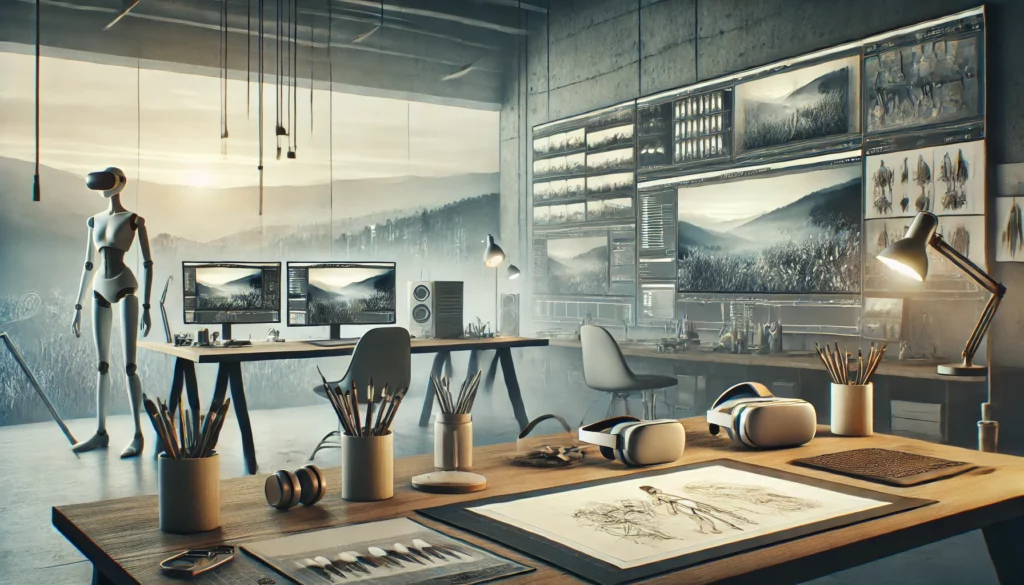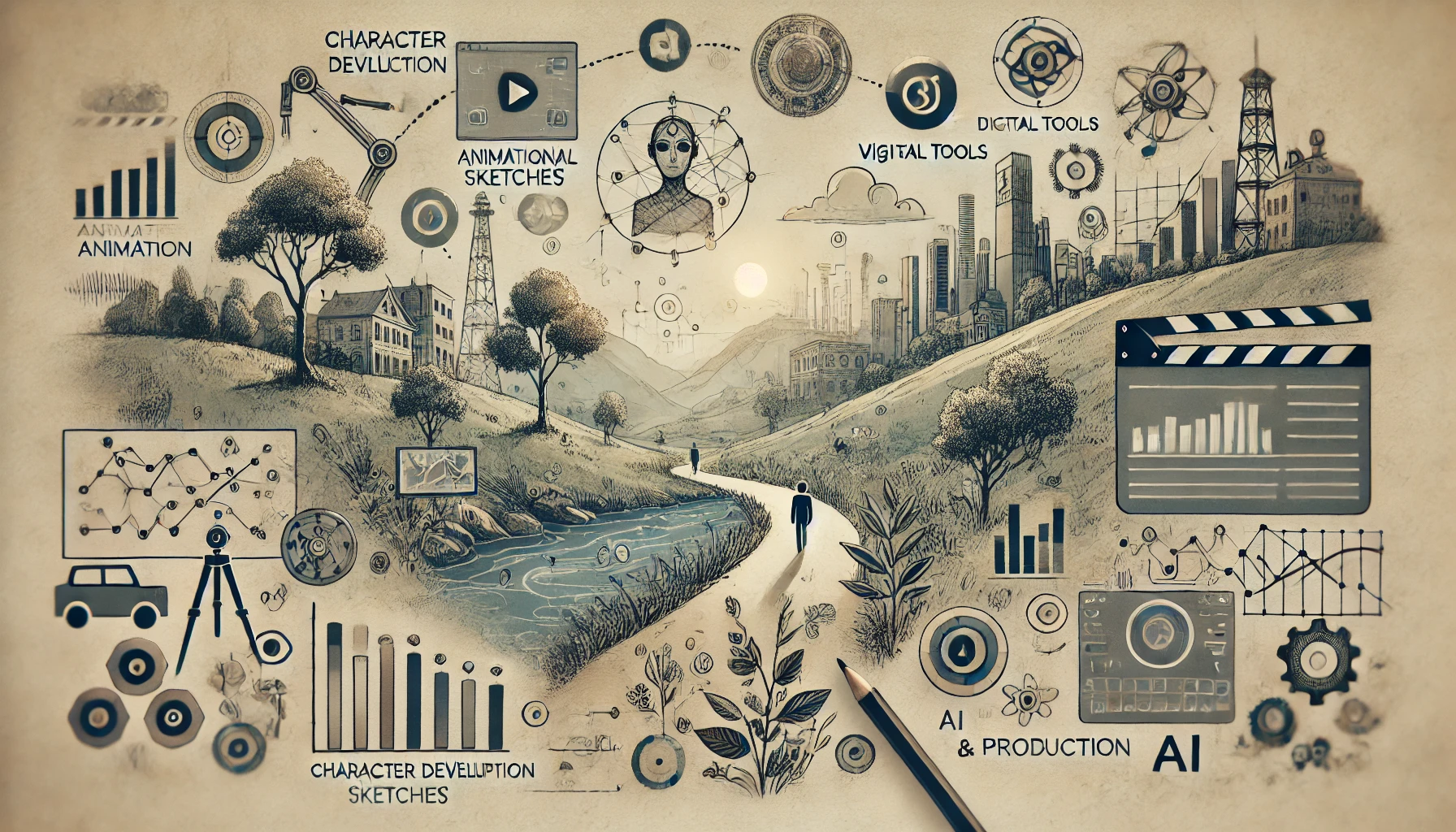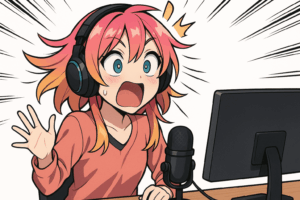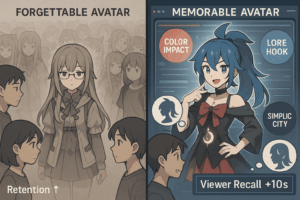The animation industry has seen unprecedented growth and transformation over the past decade. From animated films to interactive media, animation has become a dominant force in entertainment and marketing. As we delve into the trends in animation, it’s clear that technological advancements, storytelling techniques, and new tools are shaping the animation world in exciting ways. This blog will explore the animation process, the latest animation trends, and how animators are using these innovations to further create unique, immersive worlds, animated characters, and more.
The Basics of Animation: Understanding the Foundation
Animation is the art of creating moving images through the rapid display of static images or frames. Each frame in an animated sequence represents a slightly different position or change, which, when played in succession, gives the illusion of movement. The animation process can be broken down into several key stages:
- Pre-production: This is where the initial concept, storyboarding, and character design are created. The team defines the world, the characters, and the plot.
- Production: This stage involves the actual creation of the animation. Animators bring characters and scenes to life by drawing or modeling them frame by frame. It can involve 2D animation, 3D animation, or even more advanced techniques like motion capture.
- Post-production: Once the animation is complete, post-production focuses on adding sound, music, visual effects, and final edits to ensure the animation flows seamlessly.
Animation and animated videos can be created using a variety of techniques, such as traditional hand-drawn animation, stop-motion, or computer-generated imagery (CGI). Understanding these basics provides insight into the complexity and creativity behind animated films and videos.
Understanding the Animation Process: How It All Comes Together
The animation process is a complex and detailed journey that involves several stages. From conceptualizing animated content to the final touches in post-production, it requires creativity, technical skills, and attention to detail. The first step in the animation process often begins with brainstorming and sketching out ideas for characters and scenes. This initial phase can include developing character designs, refining the plot, and creating rough storyboards.
As the process progresses, animators begin to animate the characters and scenes. This involves key frames, in-betweens, and the use of animation software to bring the vision to life. New trends, such as the real time rendering in-time rendering and virtual production, allow animators to see their work in progress in real time rendering without waiting for long rendering times. These innovations are speeding up production and increasing the level of detail and realism in animated videos.
The Animation Industry: A Hub of Creativity and Innovation
The animation industry has always been at the forefront of creativity and innovation. With the rise of augmented reality (AR), virtual reality (VR), and artificial intelligence (AI), the landscape internet animation is rapidly changing. One of the most exciting trends in animation today is the integration of these cutting-edge technologies to create immersive worlds and more lifelike animated characters.
AI tools, for example, are enabling animators to automate complex scenes and inject life into characters with minimal effort. The latest advancements in AI can help with everything from full motion graphics generating textures to improving facial expressions, making it easier than ever to create stunning visual effects in animated content.
Moreover, augmented reality and virtual reality have opened up new opportunities for interactive media, where viewers can engage with the animated world in real-time. This has led to a more dynamic animation world where the boundaries between the digital environment and the the digital environment and physical environments are becoming increasingly blurred.
Animated Films: Telling Stories Through Art
Animated films have always been an effective storytelling medium, captivating audiences with imaginative worlds and memorable characters. Today, the animation industry continues to push the boundaries of storytelling with advanced techniques and trends.
From Studio Ghibli’s Howl’s Moving Castle to Cartoon Saloon’s The Secret of Kells, animated films have long used flat graphic animation and other styles to tell emotionally compelling stories. These films often feature brave heroines, fantastical landscapes, and detailed character development that resonate with both children and adults.
One of the dominant trends in animated films today is the shift towards more complex and diverse storytelling. Animators are increasingly using animation not just for entertainment but to address important societal issues like climate change, identity, and mental health. These themes resonate deeply with modern audiences and create a deeper connection between the story and the viewer.
Trends in Animation: What’s New in the Animation World?
As the animation industry evolves, several trends are emerging that are shaping the future of animated content. Some of the latest animation trends, include:
Flat Graphic Animation:
This minimalist design style is growing in popularity due to its clean aesthetic and ease of production. Flat design often uses simple, two-dimensional shapes and bright colors to convey information quickly and effectively. This technique is especially popular in advertising, motion graphics, and digital marketing.
Kinetic Typography:
Kinetic typography is a trend that involves animating text to create dynamic visual effects. This technique is widely used in animated videos, particularly in music videos, advertisements internet animation, and web content. It can be used to enhance storytelling and visual content by adding rhythm and emphasis to key phrases.
Liquid Animation:
Liquid animation is a form of a visually striking trend that simulates the movement of liquid in the form of animation. This technique is often used to create organic, fluid movements that make animated characters and objects appear more lifelike.
Interactive Media:
With the rise of augmented and virtual reality, interactive media is becoming an increasingly popular trend. These immersive experiences allow viewers to interact with animated worlds and characters in real-time, making them an effective tool for brands looking to their brand image and engage their audience’s attention in new and innovative ways.
3D Animation:
While flat graphic animation is trending, 3D animation continues to dominate the animation industry. This technique is used in everything from animated films like Happy Tree Friends to video games and commercials. 3D animation creates more depth and realism, allowing for the creation of detailed, complex scenes that would be impossible to achieve with 2D animation alone.
Generative AI:
The integration of generative AI in the animation world is a game-changer. These AI tools can create assets and animations from scratch, providing animators with new possibilities for creativity. Whether it’s generating textures for backgrounds or creating new characters, generative AI is reducing the workload of animators and opening up new creative avenues.
The Role of Animated Characters in Modern Animation
Animated characters play a crucial role in the success of animated films, shows, and commercials. They serve as the emotional anchors of the story and help to convey complex ideas and emotions. With advancements in AI and animation tools, animators are able to create more lifelike and nuanced characters than ever before.
Character development is key to creating relatable and engaging animated characters. Today’s animators focus on crafting characters with complex personalities, distinct traits, and realistic movements. Facial expressions, for example, are now animated with incredible detail, allowing characters to express a wide range of emotions. Lip syncing has also advanced, making the dialogue in animated films and shows feel more natural.
Significant trends in character development:
- Diverse Character Inclusion: A significant trend in character development is the inclusion of diverse characters across cultures, backgrounds, and identities.
- Global Representation: Animation studios are becoming more inclusive, reflecting the diversity of the real world and resonating with global audiences.
- Authentic Stories: This approach creates more authentic and relatable stories, connecting with viewers on a deeper level.
- Studio Ghibli’s Influence: Iconic studios like Studio Ghibli have long embraced diverse characters, as seen in films like Howl’s Moving Castle.
- Collage Animation: Newer trends, such as collage animation, explore artistic diversity by combining various styles and visual elements.
Recognition at the Academy Awards: These efforts are increasingly recognized at major events like the Academy Awards, where animated films gain attention for their exceptional character development and storytelling.
The Future of Animation: What’s Next?
As we look to the future, the animation industry will continue to evolve, driven by technological advancements and creative innovations. Real-time rendering, virtual production, and AI are enhancing the animation process. Additionally, these tools will enable animators to create more detailed and immersive worlds.
These tools will enable animators to experiment with new forms of storytelling techniques and create unique experiences for viewers.
Moreover, with the rise of the internet, the distribution of animated video content is changing. Animated videos are now accessible to anyone with an internet connection, and platforms like YouTube and social media have become major distribution channels for animated video content. This has democratized animation, allowing independent animators to showcase their work to a global audience.
The animation industry will also continue to explore new trends in storytelling, incorporating techniques like micro-interactions and interactive media to engage viewers in more meaningful ways. As augmented reality and virtual reality continue to grow, we can expect to see more animated content that allows viewers to become active participants in the story.

Animation’s Growing Impact on the World
The animation industry is evolving rapidly, with trends in animation and visual content reflecting the creativity and technological advancements shaping its future. From flat graphic animation to AI-powered tools and 3D animation, the possibilities for creating immersive worlds and compelling characters are endless. As animators continue to innovate, we can expect more captivating animated films and interactive media that engage audiences on a deeper level. The future of animation is bright, with emerging tools and techniques promising even more breathtaking visuals and unforgettable experiences. Discover the power of 3DAily’s AI + Artist hybrid approach for quality animated models in 3D!



